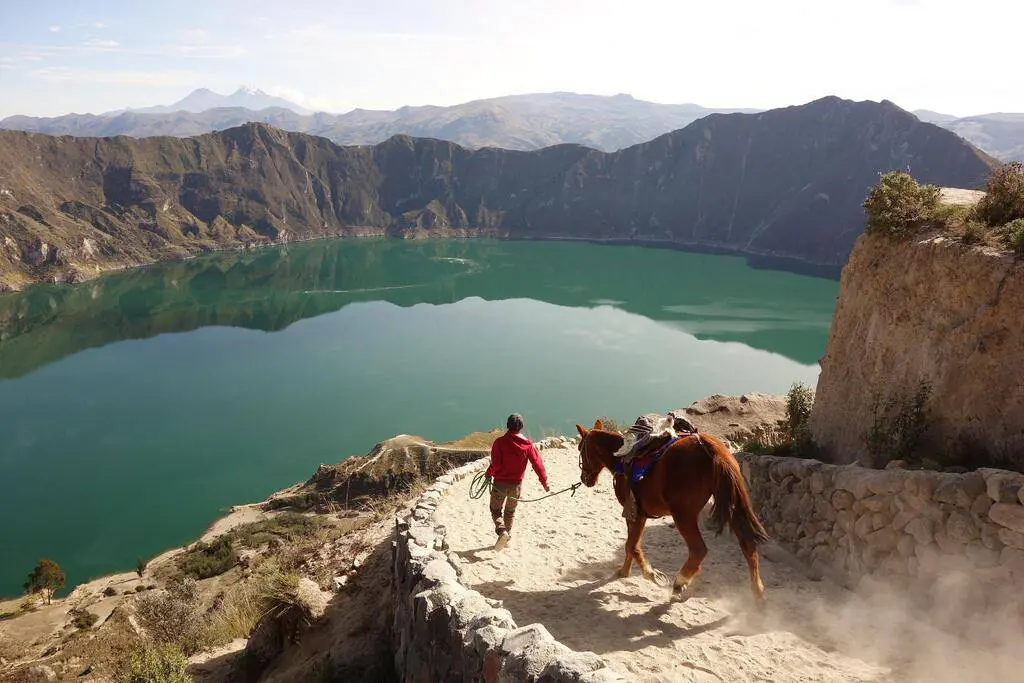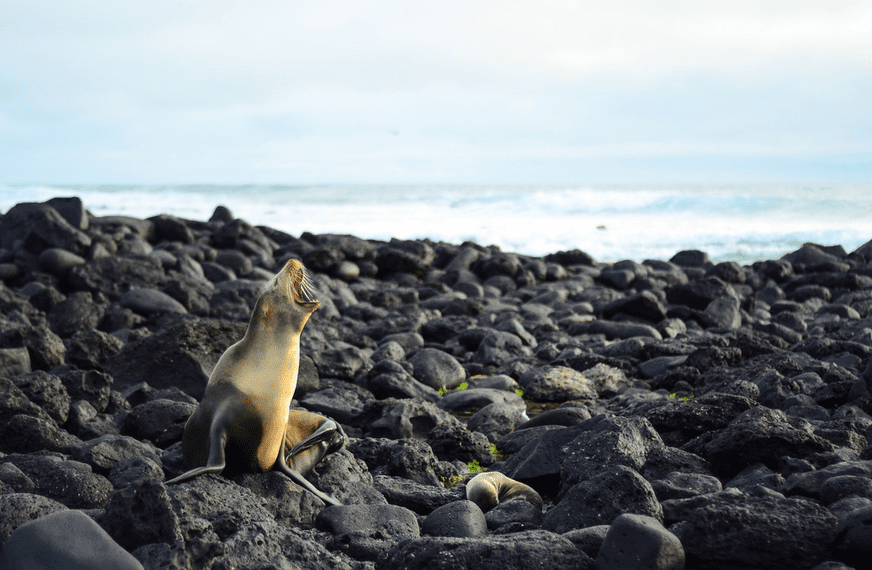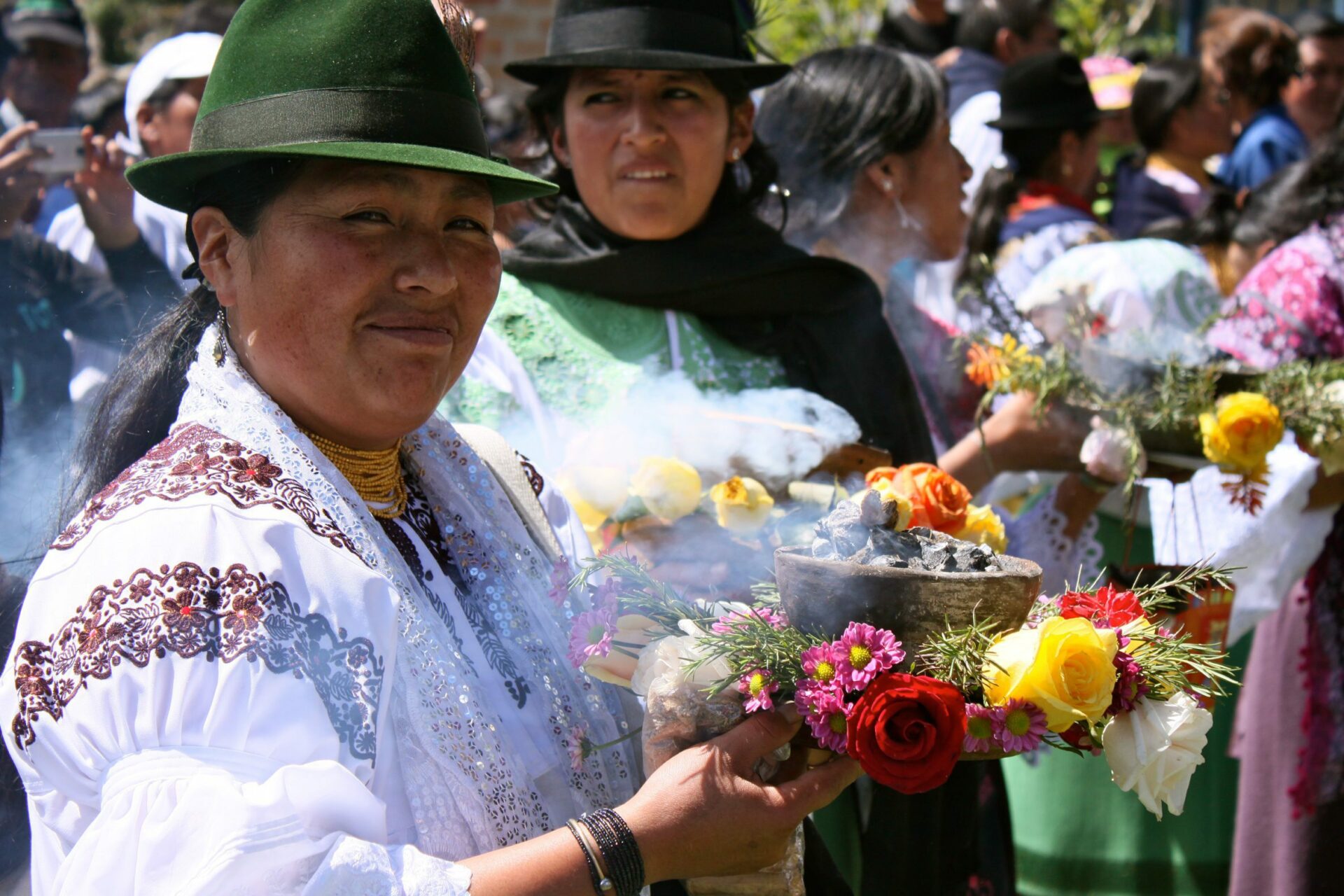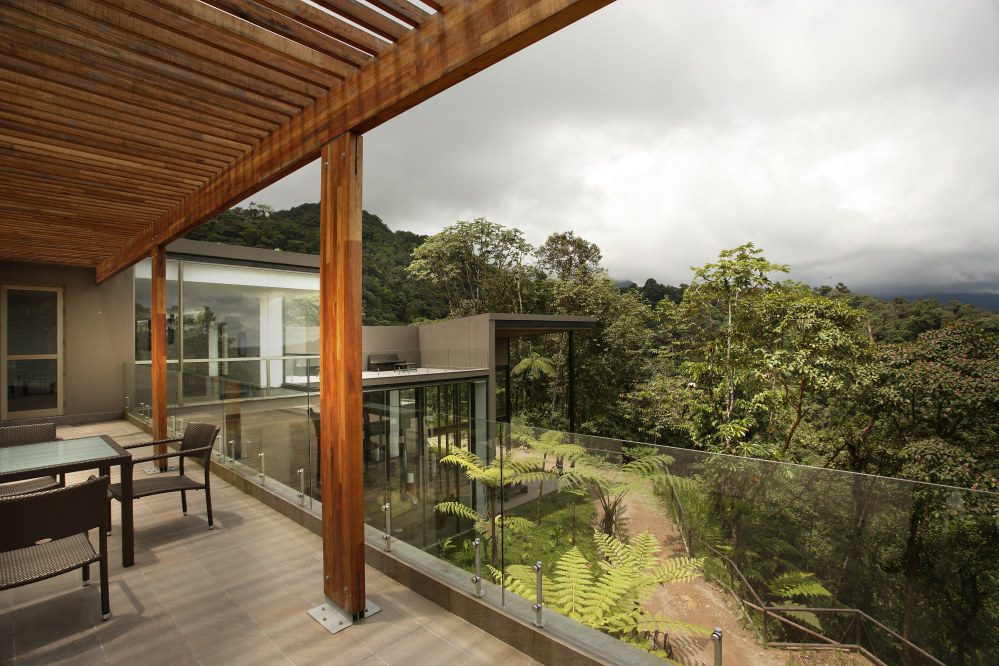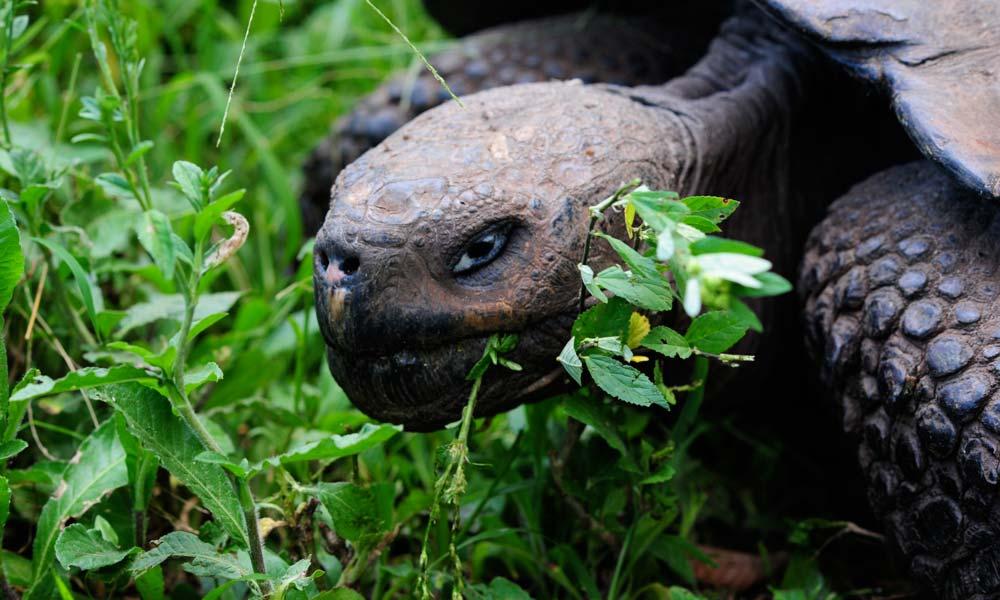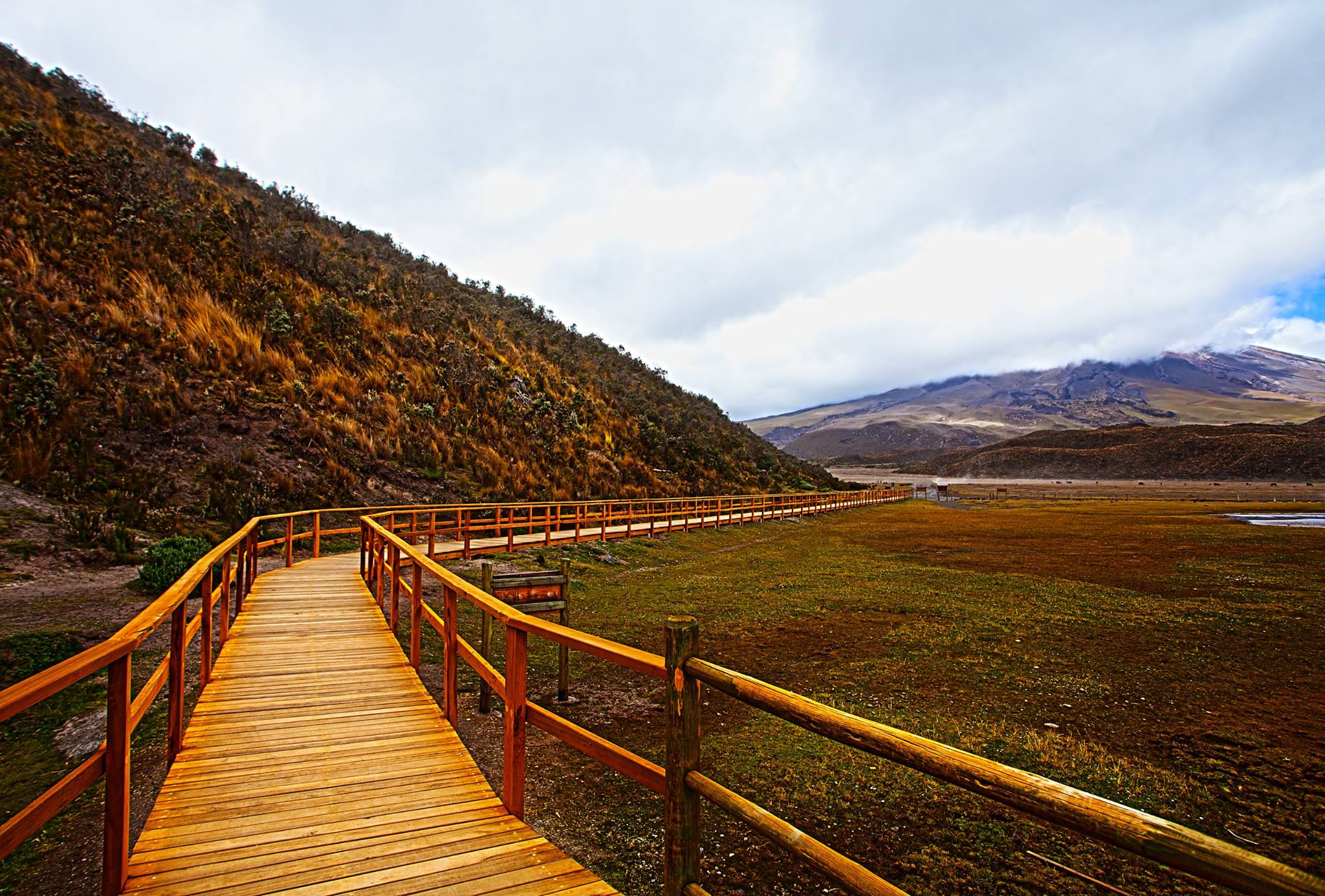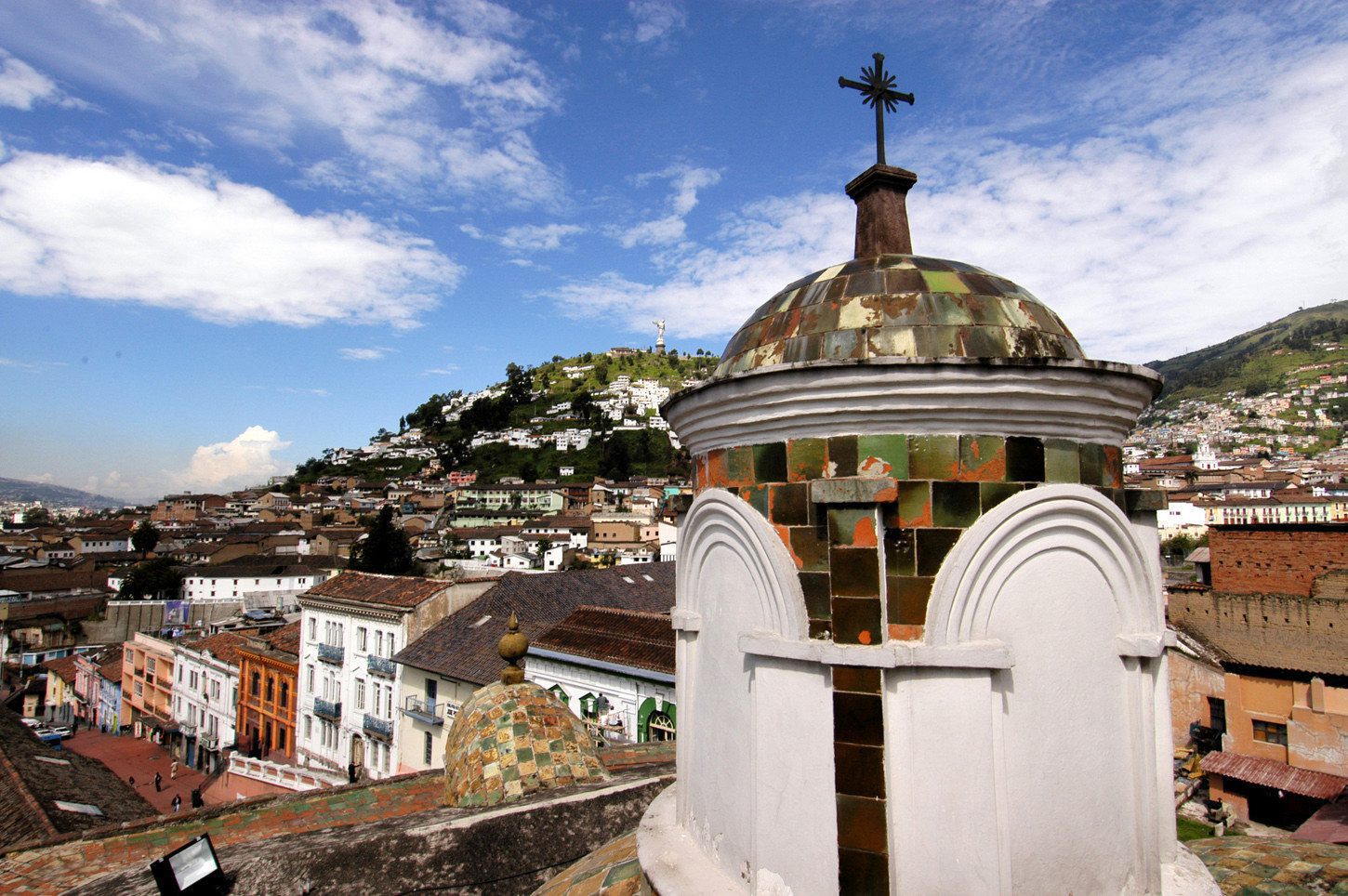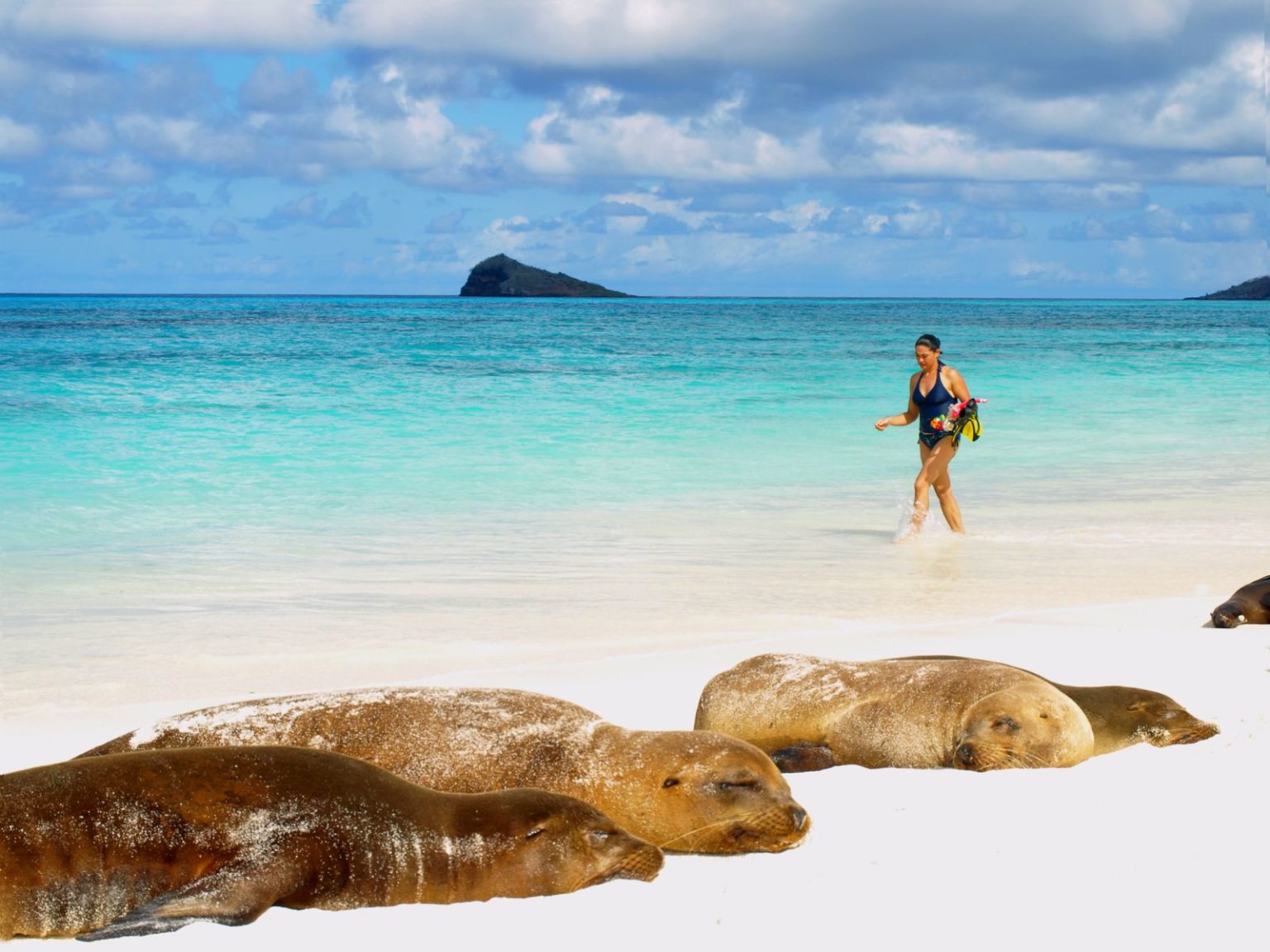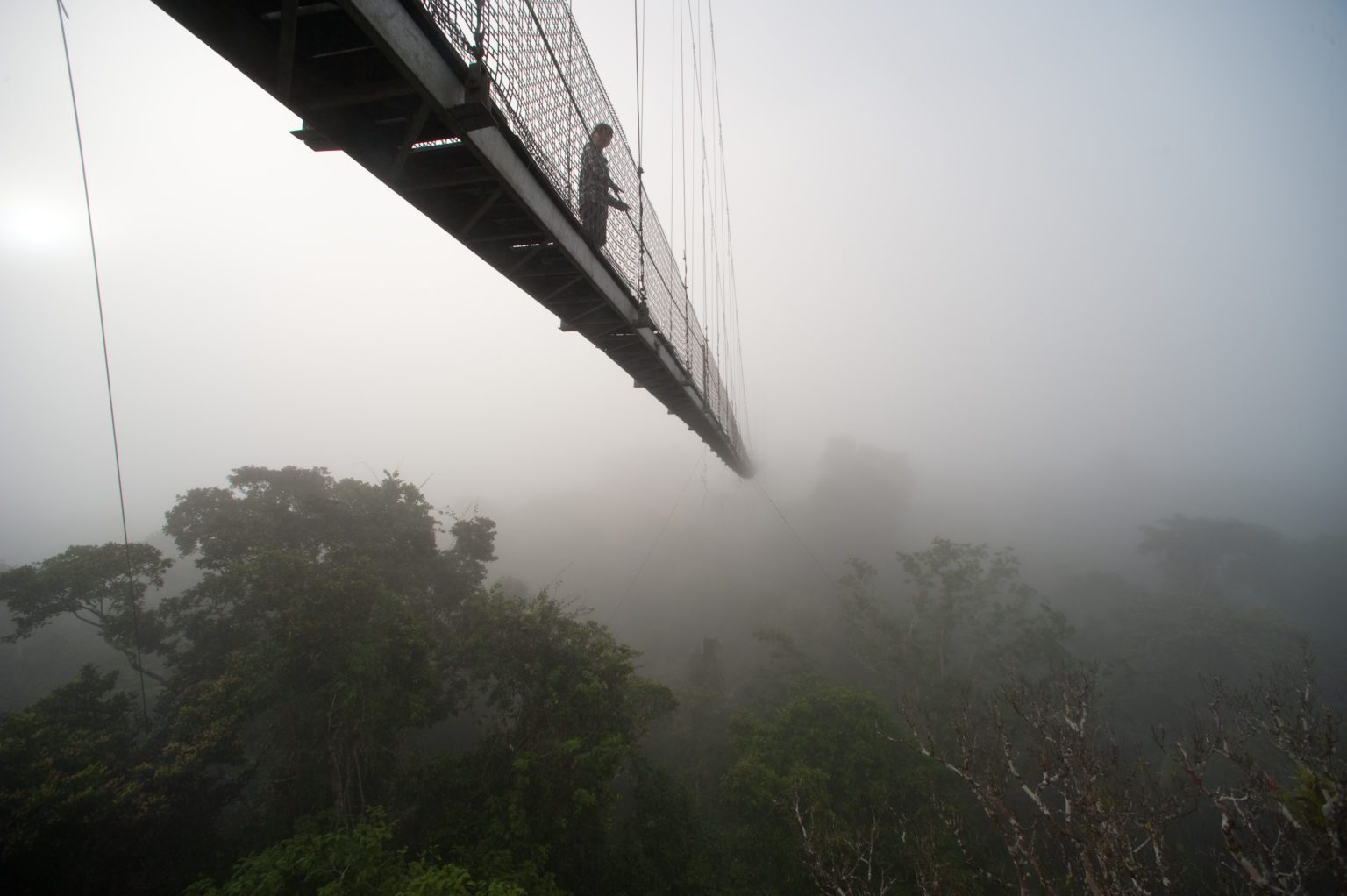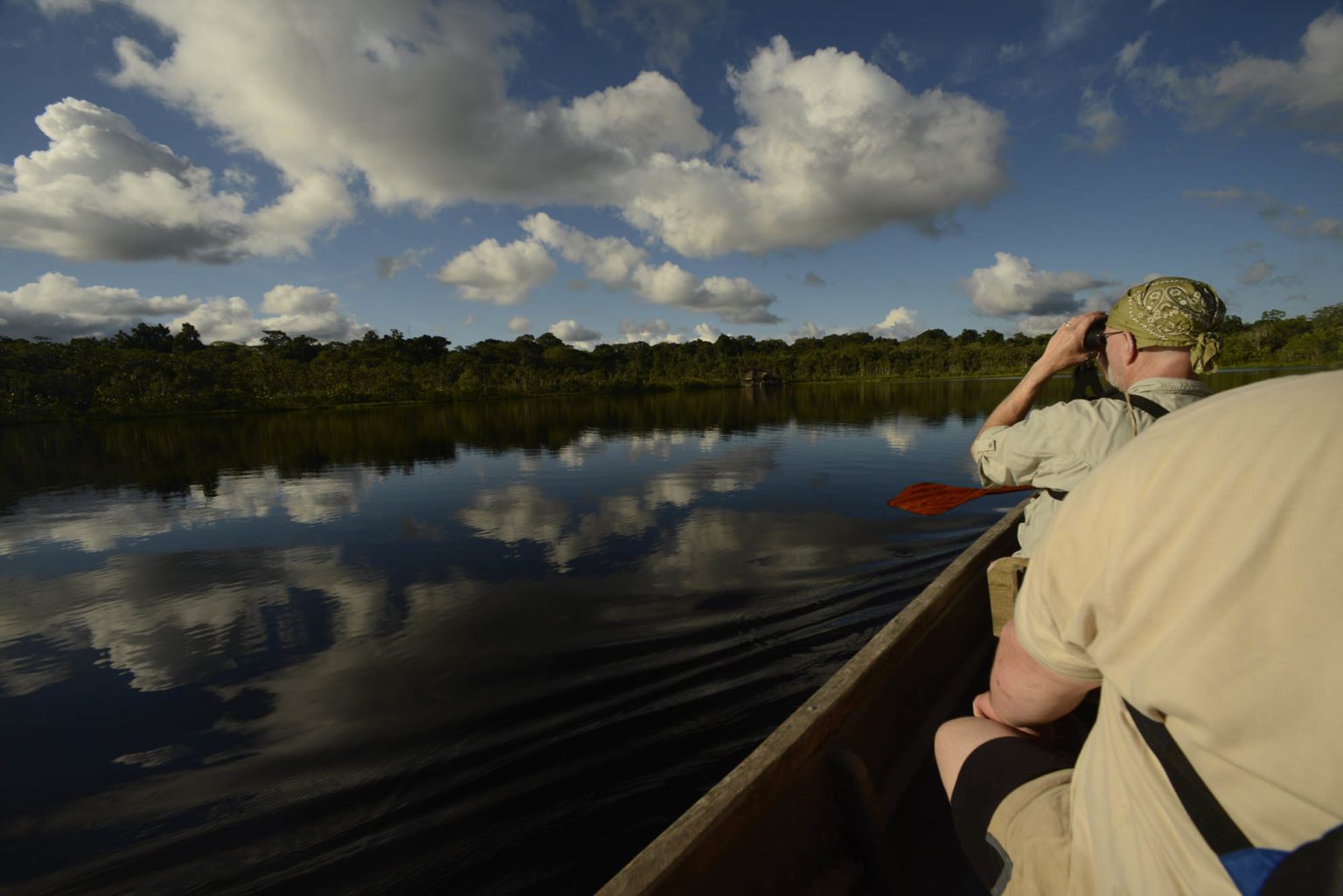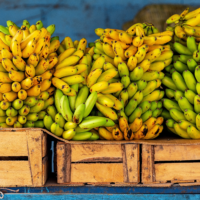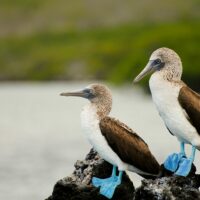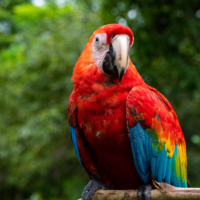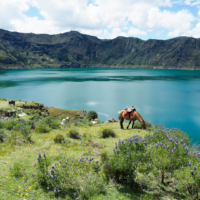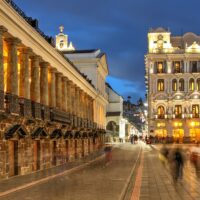Ecuador: Luxury & Private Custom Trips
Seated at the equator on the Pacific Coast of South America, Ecuador is a small country that delivers outsize travel appeal. Within a land area comparable to Nevada, you’ll find dense Amazon rainforest, a string of sawtooth highland volcanoes, Cloud Forest, a rugged coast, and its crowning gem: the Galápagos Islands. Food, architecture, wildlife watching, birding, hiking, hacienda stays, indigenous culture, and outdoor recreation ring out like a siren’s call to travelers. And thanks to easy and sometimes direct connections to the U.S., it’s a jet lag-free destination that can be enjoyed within a week or two.
What is Ecuador best known for?
Undoubtedly, Ecuador is best known for the Galápagos Islands, Amazon rainforest, and high-altitude capital of Quito—but there’s much more to be experienced in this geologically diverse country.
Ecuador travel highlights
- Walk the streets of Latin America’s best-preserved historic center in Quito’s UNESCO-listed old town
- Spot giant tortoises, blue-footed boobies, waved albatross, and penguins in the Galápagos Islands
- Look for toucans, macaws, monkeys (and more) from a canopy tower in the Cloud Forest
- Ride the “Sky Bike” at Mashpi Lodge in the Cloud Forest
- Track wildlife in Yasuní National Park and Biosphere Reserve in the Ecuadorian Amazon
- Shop South America’s largest indigenous market and stay in family-owned haciendas in the Andean Highlands
- Hike Cotopaxi, an active volcano
- Post-Galápagos, check into Hacienda La Danesa for a hygge-meets-tropical retreat on a 1,200-acre working farm
- Take a beach break on the Pacific Coast, surfing and whale watching
What to expect on a luxury trip to Ecuador
Memorable luxury accommodations: From luxe Galápagos yachts to the ultra-contemporary Mashpi Lodge, snug in a cloud forest, to charming Hacienda Zuleta, a historic highlands hotel situated on a working farm, a luxury trip to Ecuador will include memorable accommodations with a distinct sense of place.
Opportunities for water-based travel: The Pacific Ocean and Napo River offer special opportunities to experience Ecuador from the waterline. In the Amazon rainforest, black lagoon-adjacent jungle lodges offer boat-based wildlife watching. In the Galápagos, board a small ship or Relais & Chateaux-affiliated yacht for a multi-island cruise.
Rustic-luxe travel: Consider a luxury Ecuador vacation to be less about opulent hotels and more about niche, boutique experiences with high-quality guiding, unique accommodations that give back to local communities, specialty wildlife, and privately guided special-interest tours.
Seamless, worry-free travel: From the Galápagos Islands to high-altitude Quito to a rainforest eco-lodge, we will thread your journey together, arranging transfers and connections so you can enjoy seamless, worry-free travel.
24/7 in-destination support: Our job doesn’t end when your boarding pass is printed. Extraordinary Journeys is always by your side—even while traveling. We have reliable boots-on-the-ground support, and a 24/7 concierge is just a phone call away.
Ecuador FAQs
A luxury trip to Ecuador might span anywhere from one to two weeks, depending on the length of your Galápagos cruise and how many places you hope to visit on the mainland.
Ecuador’s currency is the US Dollar. ATMs are widely available, even in some of the more remote locations. Still, you should carry some cash in case you find yourself in an area without a working ATM (ATMs often break down in Ecuador) and for tipping. It’s important to have smaller bills ($1, $5, $10, $20) as many merchants will refuse larger denominations. Credit cards are pretty widely accepted; however, cash is usually the way to go in rural locations.
Spanish, as well as several indigenous languages, are spoken in different regions of Ecuador. English is also spoken in most major cities and by those working in hospitality. Extraordinary Journeys will arrange English-speaking guides and drivers for your trip.
A luxury Ecuador trip might require a combination of private transfers, domestic flights, motorized canoes in the Amazon, and ships in the Galápagos. Not to worry, Extraordinary Journeys will coordinate all logistics and transfers.
Ecuadorian cuisine is diverse and reflects influences from indigenous, Spanish, and African culinary traditions. Food varies by region, from Locro de papa (a cheesy potato soup) in the Andean Highlands to coastal ceviche, offering travelers an ever-shifting gastronomic adventure.
Like anywhere, exercise situational awareness and mind your personal belongings when traveling in cities like Quito and Guayaquil. The Galápagos, Amazon, and Cloud Forest are considered quite safe.
Hiking Cotopaxi in Ecuador is a challenging endeavor that requires a reasonable level of physical fitness and preparation due to its high altitude and demanding terrain. Cotopaxi is one of the highest active volcanoes in the world, with its summit reaching about 19,347 feet above sea level. Altitude sickness can be a concern for many hikers attempting this climb. You’ll also want to be comfortable hiking in the dark—most summit attempts start in the very early hours.
Ecuador is one of the most biodiverse countries on Earth. More than 1,500 bird species have been recorded within its borders along with an incredible number of plants, reptiles, amphibians, and countless varieties of insects. For wildlife enthusiasts, the type who are drawn to an African safari, Ecuador will absolutely deliver.
- The Amazon Basin, and the Ecuadorian Amazon in particular, is home to truly astounding biodiversity and is believed by many to contain the most diverse set of species on the Earth. This includes: 800 species of fish (including three varieties of piranha), 350 species of reptiles, more than 300 species of mammals (including jaguars), thousands of species of insects, and is a birdwatcher’s paradise.
- Compared to the enormity of the Amazon, Galápagos is a very small archipelago, but the number of animals and nature of their survival and evolutionary traits are sure to impress the savviest traveler. When visiting the islands, some animals you can look forward to spotting are giant tortoise, marine and land iguana, dolphins, sea lions, penguins, blue-footed boobies, an immense number of birds, and much more.
- As one of the largest flying land birds, the Andean Condor is a magnificent sight and a must-see species for all birders visiting the Andean Highlands.
- The Cloud Forest is home to incredible flora and fauna, including 300 species of moths and butterflies, sloths, monkeys, frogs, bears, 400 species of birds (cock of the rock, hummingbird, toucans…), and many more.
No, American citizens do not need a tourist visa to visit Ecuador.
When is the best time to travel to Ecuador?
Situated on the equator and lacking four true seasons, Ecuador is considered a year-round destination. The most popular time to travel to Ecuador is June through September and during festive season (December 20 through January 5.) If you wish to avoid the crowds, we recommend you go during the shoulder seasons of May, October/November, and January/February.
When planning a luxury trip to Ecuador, it’s important to understand that the weather varies drastically by region. What’s more, altitude directly affects the climate, so each location’s “best time to visit” may be nuanced. Generally speaking, Ecuador has two main seasons—the wet season and the dry season.
● One thing you can be sure of is that Quito is a cool and consistent city. Due to its high elevation and location very near to the equator, the weather is springlike year-round.
● The Andean Highlands experience afternoon showers from about January through May. The dry season, perhaps the best time to visit, is June through December. This region is characterized by warm days and chilly nights (though the higher you are, the colder it will be).
● The Amazon is hot and humid and sees precipitation throughout the year. However, some months, including April through July and again in October and November, are wetter than others. Higher water levels result in better wildlife viewing in the Amazon as animals can become more active. If you don’t mind getting a little wet, it’s a year-round destination!
When is the best time to travel to the Galápagos Islands?
There really isn’t a bad time to visit the Galápagos Islands.
Although the archipelago sits on the equator, the cool Humboldt Current brings cold water into the region, and with it, rainfall and cooler temperatures. In this regard, we should think in terms of wet and dry seasons.
The wet season runs from December to May and is when seas are the calmest and temperatures are the warmest. If you’re hoping to swim or snorkel, the wet season is ideal for both warmth and visibility.
Dry season spans June through November. June boasts the warmest temperatures of the season, but the water temperature is cooling, and the seas are relatively calm. By July and August, the air and water temperatures have tempered, rain showers arrive, and seas are churning. In September and August, the air temperature is warm, but the water is cool, and the seas are rough.
Weather aside, you may also want to consider whale and waved albatross migrations if you hope to see either.
Where to travel to in Ecuador
Both Quito and Guayaquil are served by a variety of airlines with direct flights from the U.S., including American, Delta, United, and JetBlue. Once there, we recommend staying one to two weeks. Because it’s in the same time zone as many U.S. cities, jetlag won’t drag you down.
Quito
Quito, the capital of Ecuador and a UNESCO World Heritage site is a lively city with one of the best-preserved historic centers in Latin America. Whether you’re a history buff, a sucker for delicious food (and chocolate), an adrenaline junkie, or a geography enthusiast (straddle the equator!), there is something here for you. Resting at 9,350 feet above sea level, Quito is the second-highest capital in the world, so the city can quite literally take your breath away.
Galápagos Islands
The Galápagos Archipelago, another UNESCO World Heritage Site, is often found at the top of travelers’ bucket lists. The Galápagos is such an immense and important marine reserve that it has earned the moniker of a “unique living museum and showcase of evolution.” Travelers have the option to take a cruise ranging anywhere from four to eight nights or spend their time in a land-based lodge. Multi-day cruising offers the best wildlife viewing experiences as you will visit different islands, but a lodge is an excellent option for families with young kids or those prone to seasickness.
Ecuadorian Amazon
The Ecuadorian Amazon offers exceptional biodiversity within a tropical rainforest that blankets much of the country’s eastern side. We prefer the eco-lodges of Yasuní National Park and Biosphere Reserve, which is 99.73 percent undeveloped and boasts some of the highest per-square-foot biodiversity on planet Earth. To reach this remote outpost, you’ll fly into Coca and then take a two-hour motorized canoe ride up the Napo River—a journey that’s as scenic as it is logistical. Canoe excursions, wildlife tracking, tower lookouts, canopy walks, birding, photography, and even wellness treatments await.
Andean Highlands
With towering Andes peaks and a string of volcanoes (“Avenue of Volcanoes”) mingling amid pastoral valleys, the Andean Highlands should not be overlooked. Pick your pace, from a thrilling ascent of snow-capped Cotopaxi to shopping Otavalo’s local markets or horseback riding through the ranchland that hugs our favorite haciendas. The region also affords travelers a special opportunity to engage with indigenous culture and tradition; Quechua can still be heard throughout the Highlands, and Inca ruins and relics can be found in the region.
Cloud Forest
The Cloud Forest, a lush, misty, high-altitude forest represents one of the most biodiverse ecosystems in the world. The low-hanging fog, towering mountains, and cascading waterfalls set a magical scene. An abundance of orchid species grows throughout the otherwise green hills, and the equally abundant birdlife and butterflies flitter amongst the colorful backdrop. With several bio-reserves, wildlife refuges, and conservation areas,[CR5] this prime location for eco-tourism offers hikes, birdwatching, and even an open-air cable car to view the forest from just above the treetops. There’s white-water rafting and river tubing, too.
Easy extensions
Many travelers pair a trip to the Galápagos with a week in Peru to see Machu Picchu. Quito is an international hub with flights connecting to destinations along the Pacific coast of South America.
Some of our favorite luxury Ecuador trip itineraries

- Itinerary
Galápagos by Boat + Ecuador’s Tropical Lowlands
There’s no better way to travel the Galapagos Islands than by boat
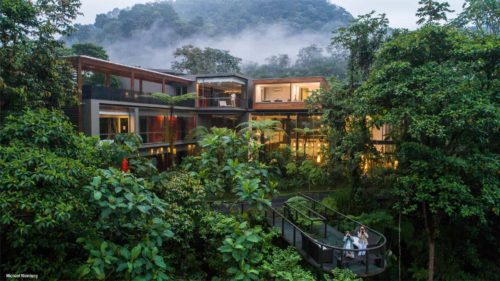
- Itinerary
Ecuador Wilderness and Wildlife
Historic Quito, luxury Galapagos cruise, Amazon Jungle, and enchanting Cloud Forest
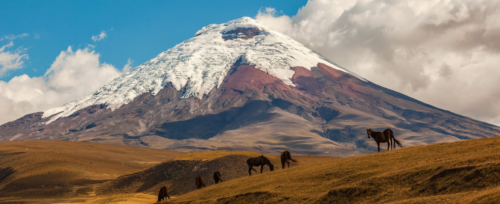
- Itinerary
Luxury Ecuador
Visit the Galapagos Islands, the Andean Highlands, and the Avenue of Volcanoes
Our favorite luxury Ecuador hotels & lodges
 Olivia Schellenberg
Olivia Schellenberg

